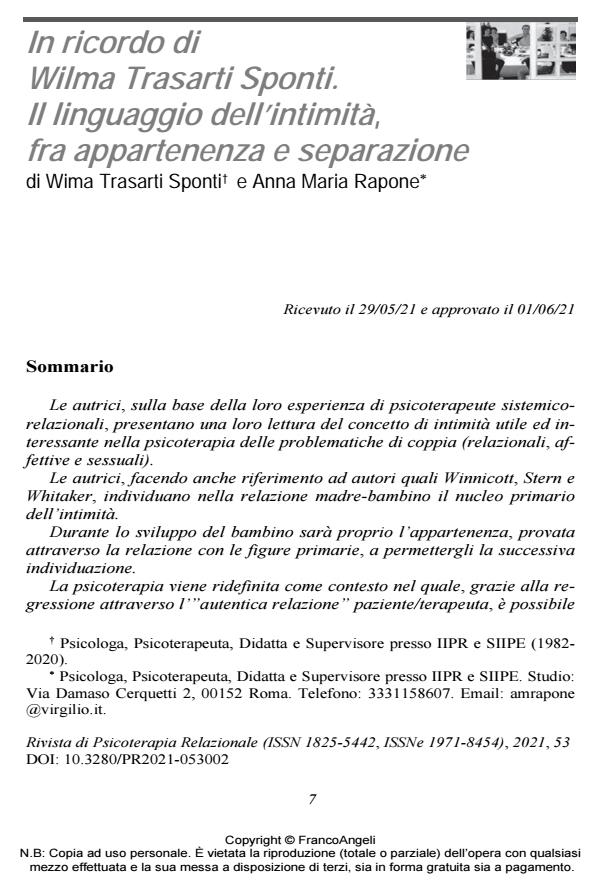The secret language of intimacy between belonging and individuation.
Journal title RIVISTA DI PSICOTERAPIA RELAZIONALE
Author/s Wima Trasarti Sponti, Anna Maria Rapone
Publishing Year 2021 Issue 2021/53
Language Italian Pages 19 P. 7-25 File size 223 KB
DOI 10.3280/PR2021-053002
DOI is like a bar code for intellectual property: to have more infomation
click here
Below, you can see the article first page
If you want to buy this article in PDF format, you can do it, following the instructions to buy download credits

FrancoAngeli is member of Publishers International Linking Association, Inc (PILA), a not-for-profit association which run the CrossRef service enabling links to and from online scholarly content.
The author, present their concept of intimacy which proved to be of great interest and help in psychotherapy of couples problems (rela-tional, emotional and sexual). They experienced and utilized in their clinical work as systemicrelational psychotherapists. The authors, referring also to Winnicot, Stern, and Whitake, indi-viduate in the primitive "mother-child" relationship the nucleus of in-timacy. The child while experiencing belongings with mother and other rel-evant figures will then develop the capacity of safely individuating. They then define psychotherapy as a context in which the patients can experience regression and recognize their needs thanks to the honest authentic patient/psychotherapist relationship. The therapist "sufficiently good" will act as facilitator to activate or re-activate pa-tients resources. During couple psychotherapy the authors take into account the multigenerational story of patients and its development and analyze and utilize the nostalgia of primitive belonging together with the actual shame and uncertainty of recovering it. Finally they suggest that the concept of "struggle of power" so of-ten present in couples problems solving might be a poor shelter cover-ing deeper needs looked for in a couple relationship.
Keywords: belonging, individuation, intimacy, relationship, shame, systemic-relational couple therapy.
Wima Trasarti Sponti, Anna Maria Rapone, In ricordo di Wilma Trasarti Sponti. Il linguaggio dell’intimità, fra appartenenza e separazione in "RIVISTA DI PSICOTERAPIA RELAZIONALE " 53/2021, pp 7-25, DOI: 10.3280/PR2021-053002